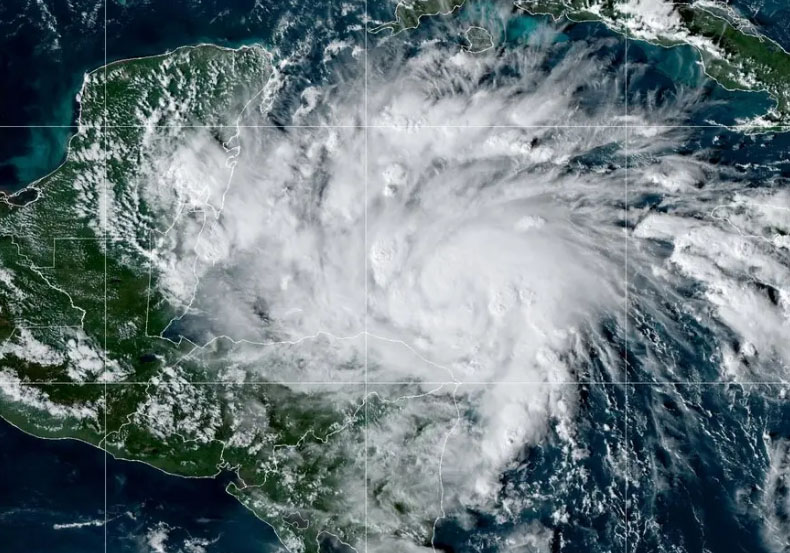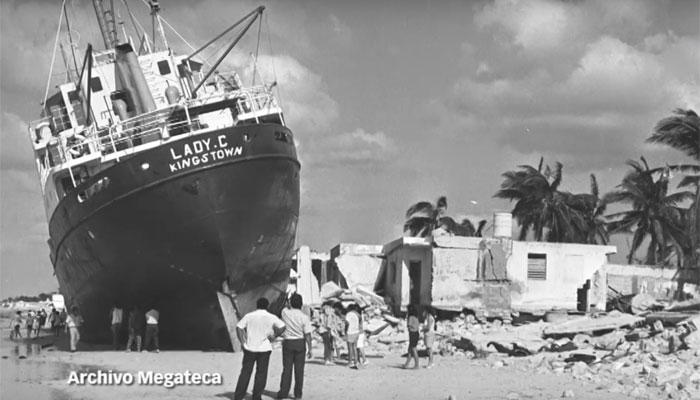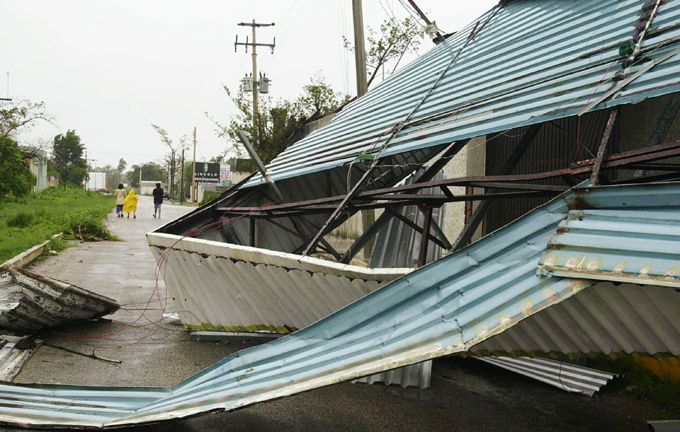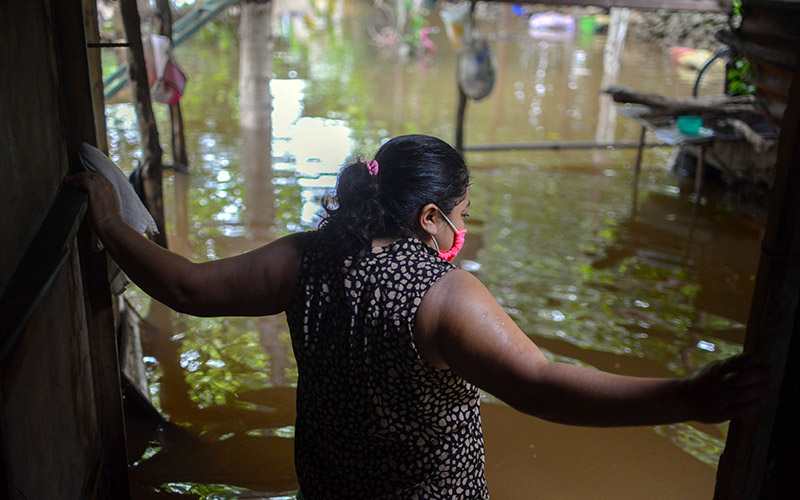
The Yucatán hurricane season is definitely on early. Depending on which computer model you believe, the Peninsula could be hit with the first of several hurricanes this weekend. While we keep an eye on Beryl, here’s a brief history to put this possibly rocky hurricane season in context.
The Yucatán Peninsula has weathered its share of powerful storms over the decades. Since the 1960s, this region has faced the fury of numerous hurricanes, leaving a trail of destruction but also showcasing the remarkable resilience of its people and the region’s ability to bounce back.
The 1960s and 1970s: A Period of Relative Calm
While the Yucatán Peninsula is no stranger to hurricanes, the 1960s and 1970s were characterized by a relatively lower frequency of major storm events than other periods. However, this doesn’t mean the region was entirely spared. Tropical storms like Abby in 1964 and Brenda in 1968 brought heavy rains and localized flooding, while Hurricane Inés in 1966 caused significant damage in the northern part of the peninsula.

The 1980s and 1990s: A Surge in Hurricane Activity
The 1980s and 1990s witnessed a notable increase in hurricane activity in the Yucatán Peninsula. One of the most devastating storms of this era was Hurricane Gilbert, or Gilberto, in 1988, a powerful Category 5 hurricane that ravaged the region with sustained winds of over 185 mph. Gilbert’s impact was widespread, causing extensive damage to infrastructure, agriculture, and tourism and significant loss of life.
Other notable hurricanes during this period include Roxanne in 1995, which caused significant flooding in the state of Campeche, and Mitch in 1998, which, although it did not make direct landfall in the Yucatán Peninsula, brought heavy rains and strong winds that caused damage and disruption.

The 2000s: Isidore and Wilma
The 21st century has continued to bring new challenges for the Yucatán Peninsula in the form of powerful hurricanes. Hurricane Isidore / Isidoro in 2002, although a weaker storm than Gilbert, Isidore’s slow movement and heavy rainfall led to catastrophic flooding, particularly in Yucatán state. Thousands of homes were destroyed, and agricultural lands were inundated, causing significant economic losses.
Hurricane Wilma, another Category 5 monster, wreaked havoc on the region in 2005, particularly in the resort areas of Cancún and Cozumel. Wilma’s storm surge and high winds caused widespread damage to hotels, businesses, and infrastructure, a major blow to the region’s tourism industry.
Although not as intense as Wilma, Hurricane Dean in 2007 also significantly impacted the Yucatán Peninsula. Dean’s strong winds and heavy rainfall caused flooding, power outages, and crop damage, further testing the region’s resilience.
More recently, the peninsula has faced hurricanes like Emily in 2005, Ernesto in 2012, and Delta in 2020, each leaving its mark on the landscape and communities.

Lessons Learned
Despite the frequent challenges hurricanes pose, the Yucatán Peninsula has demonstrated remarkable resilience and the ability to recover and rebuild. After each major storm, communities have come together to help one another, and government agencies have worked to implement improved disaster preparedness and response measures.
The region has also made significant strides in strengthening its infrastructure, making it more resistant to hurricane-force winds and flooding. Early warning systems have been improved, evacuation plans refined, and building codes strengthened to protect homes and businesses better.
Looking Ahead
As the Yucatán Peninsula continues to face the threat of hurricanes, the commitment to preparedness and resilience remains stronger than ever. By learning from past experiences, investing in infrastructure, and fostering a culture of community support, the region is better equipped than ever to weather future storms and emerge even stronger.
While the history of hurricanes in the Yucatán Peninsula since the 1960s is marked by both devastation and recovery, it is ultimately a story of human resilience, adaptability, and the unwavering spirit of a region determined to thrive in adversity.







